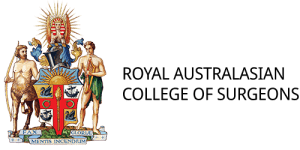SKIN CANCER PATIENT INFORMATION
Skin cancer overview
Australia has one of the highest rates of skin cancer in the world due to the large proportion of fair-skinned population and the intensity of ultraviolet sunlight exposure. The majority of skin cancers occur in the sun exposed head and neck region. They tend to be more common in people who have worked outdoors, particularly if they have not used sunscreen or protective clothing, with increasing age and also in patients that have an immune deficiency. The most common skin cancer is basal cell carcinoma (BCC) followed by squamous cell carcinoma (SCC) and then less frequently but more concerning Melanoma and rarely Merkel cell cancers.
Types of skin cancer
Basal Cell Carcinoma
BCC is generally a localised cancer that invades and destroys nearby tissues but usually grows slowly and rarely spreads to lymph nodes or other organs in the body. As a result, BCC is the least dangerous type of skin cancer. Basal cell carcinomas usually start as small, round or flattened lumps that are red, pale or pearly in colour, and may have blood vessels on the surface.
Squamous Cell Carcinoma
SCC is a more aggressive from of cancer that grows more rapidly than BCC and has the potential to spread (metastasise) to lymph nodes and rarely other parts of the body. SCC looks like a thickened red scaly spot, which may ulcerate, bleed easily and is sometimes tender. Dr Ebrahimi has published and presented extensively on head and neck cutaneous SCC with lymph node metastases to the parotid or neck and has extensive clinical experience with this difficult problem.
Melanoma
Melanoma is a less common type of skin cancer but one of the most dangerous. It can spread to other parts of the body unless treated early. They may appear as a new spot or an existing spot, freckle or mole that changes in shape, colour or size. Melanoma usually has an irregular or smudgy outline and can be more than one colour or even rarely skin coloured. They can grow over weeks, months, or years and can appear anywhere on the body, including areas that aren’t exposed to the sun.
Merkel Cell Carcinoma
Merkel cell carcinoma is a highly aggressive skin cancer that is rare and usually occurs in elderly patients. It presents most commonly in the head and neck region as a painless, flesh coloured, red or purple nodule. Merkel cell cancers have often spread by the time they are diagnosed, and have a high tendency for recurrence in the skin, nearby lymph nodes and other organs after treatment.
Skin cancer surgery
Most skin cancers are best treated with surgery though creams and radiation therapy are sometimes an option.
Simple excision
For early skin cancers, a simple excision is often adequate treatment and can usually be performed with local anaesthetic injection to numb the area. The lesion is sent to a pathologist who diagnoses the type of cancer, whether it has been completely removed on a microscopic level and other factors that help gauge the risk of recurrence or spread. For cosmetically sensitive areas on the face where we want to avoid unnecessarily large excisions, Dr Ebrahimi can arrange to have the specimen assessed during surgery by a pathologist to confirm that enough tissue has been removed to clear the cancer. This is called a frozen section examination.
Wide local excision
A wide local excision is where additional skin surrounding the cancer is removed to reduce the risk of recurrence at that site. Even though an initial biopsy often removes the entire tumour, wide local excision may be recommended to further reduce the risk of the cancer coming back. This may be needed for all types of skin cancer but is virtually always required after the diagnosis of melanoma. With melanoma, you may need a sentinel lymph node biopsy at the same time as your wide local excision to assess whether the melanoma has spread to nearby lymph nodes.
During wide local excision we remove a 1-2cm margin around the site of the original skin cancer but this has to be tailored to the specific cancer, the pathology features, the presence of important nearby structures and the individual patient. Some wide local excisions are closed with stitches but larger wounds may need skin grafts or skin flaps. With years of training and experience in head and neck reconstruction, Dr Ebrahimi is highly skilled in reconstructive surgery techniques, including skin grafts and flap repairs.
Flap repair
When the wide local excision wound is too large to close with stitches, either a flap repair or skin graft is needed. A local skin flap consists of skin taken from an adjacent area to the wound and moved to fill the surgical defect. Local flaps provide the benefit of supplying tissue of a similar appearance, colour and thickness to the tissue that has been removed. They also often provide a better cosmetic result than skin grafts and are easier to manage post-operatively.
Skin grafts
When the wide local excision leaves a wound that is too big for stitches, the alternative to local flaps is a skin graft. There are two types of skin graft. Split skin grafts are taken by shaving the surface layer of the skin with a special surgical knife called a dermatome. The donor site for the skin graft is usually the thigh. Split skin grafts are useful when a large area of skin is needed. In contrast, a full-thickness skin grafts includes all layers of the skin and are often taken from behind the ear, the neck or sometimes the groin. The donor site is usually sutured closed and we aim to place this scar in either a skin crease or hidden location to optimise the cosmetic outcome. Whether a split or full thickness skin graft is used, the piece of skin is applied to the wound with special dressings. The graft covers the wound, attaches itself to the cells beneath and begins to grow in its new location. If a skin graft were not performed, the area would be an open wound that takes much longer to heal. Skin grafts need special care and dressings for several weeks after surgery.
When reconstruction is required after cancer surgery, in many cases both local flaps and skin grafts are an option. Each have unique advantages and disadvantages and the recommended approach should be tailored to the individual patients situation.
Sentinel lymph node biopsy
The sentinel lymph node is the very first lymph node (or several nodes) to which cancer cells from the primary skin cancer site are likely to drain via lymphatic channels. If there is no cancer in the sentinel lymph node, the cancer is very unlikely to have spread elsewhere, so this provides the most powerful prognostic information in many melanoma patients and may guide further treatment and reduce the risk of recurrence in the lymph glands.
Sentinel lymph node biopsy (SLNB) is a critical part of managing many patients with melanoma and is a well-established procedure designed to identify and remove the sentinel node(s). In the head and neck region, sentinel lymph nodes are found either in the neck or the parotid salivary gland. The procedure is done in two stages.
Firstly, a nuclear medicine specialist performs lymphatic mapping. This is performed on the day before surgery if your operation is scheduled in the morning, or on the morning of surgery if your operation is in the afternoon. The nuclear medicine specialist will inject a weak radioactive dye in the skin near the cancer, which then drains into nearby lymph nodes. These lymph nodes will be located using a special scanner and marked on the skin and scans produced to guide the surgery. In the operating theatre, a blue dye will be injected by Dr Ebrahimi in the skin cancer site, which also drains to the sentinel lymph nodes. Numerous studies and clinical experience show that the best way to accurately locate the sentinel node(s) is to use both the radioactive tracer and blue dye.
The second stage of SLNB is the surgery performed under general anaesthetic, by making a cut in the skin to reach the lymph nodes identified pre-operatively during lymphatic mapping. During the surgery, a hand-held radioactive tracer probe as well as the presence of blue dye help to identify the sentinel node(s). SLNB is usually performed at the same time as wide local excision for patients with melanoma. It is generally successful, very accurate and safe but there is a small risk of complications such as nerve injury, bleeding, fluid collections and infection. Typically, you will remain in hospital overnight after the procedure.
Will I have an anaesthetic?
This depends on the size and location of the skin cancer as well as whether you need reconstruction and personal preferences. Small skin cancers can usually be treated under local anaesthetic with or without a mild sedation. In many of the more complex cases Dr Ebrahimi treats however general anaesthetic will be recommended.
General anaesthetic is extremely safe but does carry a very small risk of serious complications. General anaesthetic can also affect your judgment, coordination and memory for 24 hours so during this time you must avoid driving, operating machinery, going to work or school, making important decisions or signing legal documents.
Will I have a scar?
You will have a scar, which may be red for a few months, before fading to a thin line. In most people the scar ends up being relatively inconspicuous and when possible we try to hide the scar in cosmetic locations. Very occasionally, the scar can become thickened and red which is called a keloid scar. This is rare in Caucasians and results mainly from the patients skin type and a predisposition to keloid scarring. You will be given instructions on managing the scar after surgery to maximise the chances that it heals nicely.
Will I have pain?
Most patients don’t have much pain after skin cancer surgery and take panadol or nurofen to keep them comfortable at home. You may be given a prescription for something stronger depending on the surgery performed.
When will I know the pathology results?
The lump will be sent for analysis by a Pathology specialist. The results usually take 1-2 weeks to come back and will be discussed with you at your first post-operative visit in the office.
Dr Ebrahimi's approach to skin cancer surgery
The key to successful skin cancer surgery is experience, meticulous surgical technique, familiarity with important surrounding anatomical structures in the head and neck region and experience with a wide range of reconstructive options. Dr Ebrahimi aims to optimise results for patients requiring skin cancer surgery using a combination of:
- Extensive experience operating in the head and neck region. This becomes particularly important as skin cancers become more complex since there are so many important nerves and other vital structures that can easily be damaged in the head and neck. When surgeons inexperienced in the head and neck region perform these operations we often see unnecessary morbidity from nerve injuries or inadequate cancer surgery due to concern about deeper structures. This can lead to recurrence, spread and needing radiotherapy and is often preventable.
- Extensive experience in all reconstructive aspects of skin cancer surgery in the head neck including skin grafts, local flaps and more complex reconstructions using microsurgery
- When appropriate Dr Ebrahimi uses intraoperative nerve monitoring to protect nerves in the region of the surgical site.
- Use of loupe magnification and a headlight to enhance visualisation
- In cancer cases where nerves have to be sacrificed, we perform nerve grafts and other procedures to reduce the impact over time
- Availability of intra-operative frozen section pathological examination when required
Are there any risks from skin cancer removal?
Skin cancer surgery is usually very safe, with quick recovery, especially if general anaesthetic is not required. There are some risks with any procedure however, including:
Wound infection
In healthy patients infection is uncommon after skin cancer surgery and usually easily treated with antibiotics.
Bleeding
A small amount of bleeding during the procedure and bruising afterwards are not uncommon. If bleeding occurs, rest with the affected area elevated above the level of your heart, and apply firm, constant pressure on the wound for 20 minutes without removing the original dressing. If bleeding continues, urgent medical advice should be sought.
Wound healing problems
Occasionally wounds, local reconstructive flaps or skin grafts may not heal as expected. Risk factors for poor wound healing include diabetes, smoking, steroids and certain other medications, previous radiotherapy to the surgical site, poor nutrition and certain medical conditions.
Damage to adjacent nerves
There are many important sensory and motor nerves in the head and neck, including the facial nerve. Injury to these can cause numbness or paralysis, respectively. The risk depends on the location and depth of the skin cancer, however, having your surgery performed by a skin cancer surgeon with special expertise in the head and neck minimised the risk of unnecessary damage.
Keloid Scar
These are thick, raised red scars. It is rare in Caucasians but relatively common in patients of Asian or African descent, particularly when young.
Incomplete cancer excision
If the pathology results show incomplete excision of the cancer, there is a significant risk of recurrence. In most patients, either further surgery or consideration of radiation treatment.














